
Winter is pretty cold in Korea and this winter especially was freezing cold. The lowest temperature in Seoul got as low as 3°F ! Yikes!! So hot belly warming foods like soups and porridge are very popular this time of year. Korean food has many different kinds of porridge (죽 juk). They are made with abalones (my personal favorite), pumpkin, red bean, mung bean, pine nuts, spinach, beef, chicken, oysters..and the list goes on. Koreans love juk. They eat different porridges for breakfast, as appetizers and almost always when they are sick. They are now many chain restaurants that serve only porridges (juk) and they are very popular.
According to history, juk was part of Korean food even before plain rice became the main staple. Just as our ancestors started farming they started to make porridge out of different grains, nuts, vegetables and hunted meats. Probably because juk is quite easy to make and was a great way to feed many hungry families with small amount of food. I mean, if you look at the recipe, juk is almost 90% water. Also because juk is easier to digest and usually made with nutritious ingredients, they are great for babies and for sick people.
Making black sesame porridge is not difficult at all but it is not by any means a quick food. You need time for it to cook fully. But once you make a batch, you can store and eat it for days so it can be worth the time.
Here are also some nutritional facts about sesame seeds that go into this black sesame porridge : “Sesame seeds are a very good source of copper and a good source of magnesium and calcium. Just a quarter-cup of sesame seeds supplies 74.0% of the daily value for copper, 31.6% of the DV for magnesium, and 35.1% of the DV for calcium. And black sesame seeds are known to have even higher fiber and calcium content than regular sesame seeds. They are also a good source of iron, phosphorus, vitamin B1, zinc and dietary fiber.” (whfoods) Koreans often eat black sesame seeds jook after surgery to regain their strength and to also to help with constipation.
Black Sesame Porridge (Heugimja-juk/Heukimja-juk) 흑임자죽
Servings: 6 Cooking Time : 1 hr (for soaking) + 20 min Difficulty: Medium
Ingredients
- 1/2 C Roasted black sesame seeds (you can also use regular sesame seeds although black sesame seeds are more nutritious)
- 1 C Short Grain Rice
- 5~6 C Water (water will be divided and used at different stages)
- 1 tsp Salt
- Sugar or Honey (optional)
- Dried jujubes/pine nuts/almond (as garnish)
Directions
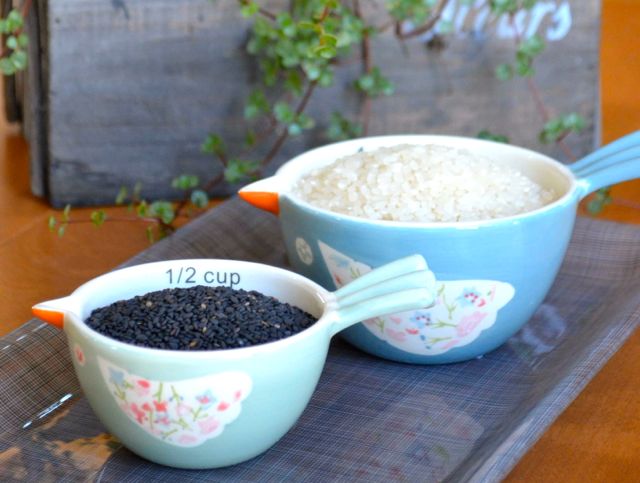
- Measure 1 C of rice and let it soak in water for 1 hour or more and drain.
- Measure 1/2 C of black sesame seeds. Rinse and drain.
- When the rice is fully soaked, finely grind the rice with 1 C (out of 5) of water. It should come out looking something like this:
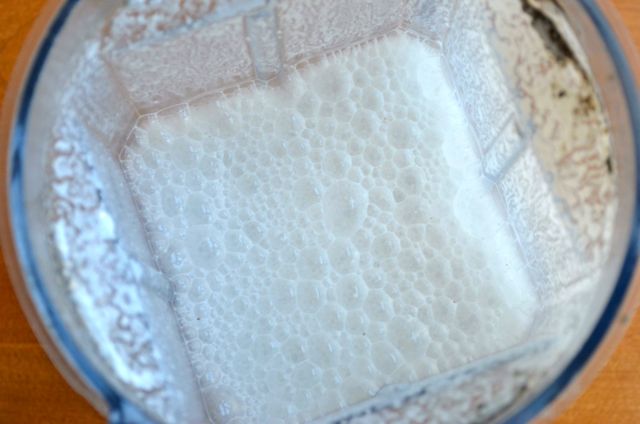
blended rice Depending on the power of your blender, it may not come out fully smooth right away. Try straining it to see if there are any bigger bits. You can grind the bigger pieces a second time with some additional water if you want your black sesame porridge to be totally smooth. Some people prefer to have their juk with bits that they can chew on. However you like it. Set aside.
- Finely blend the black sesame seeds with 2 C of water. Instead of adding all of the water at once, start blending with less water (more like 1/2 to 1 C) and gradually add more. Unless you have a blender as powerful as vitamix, your blender will not be able to finely grind it if you add the full 2 C of water from the start.
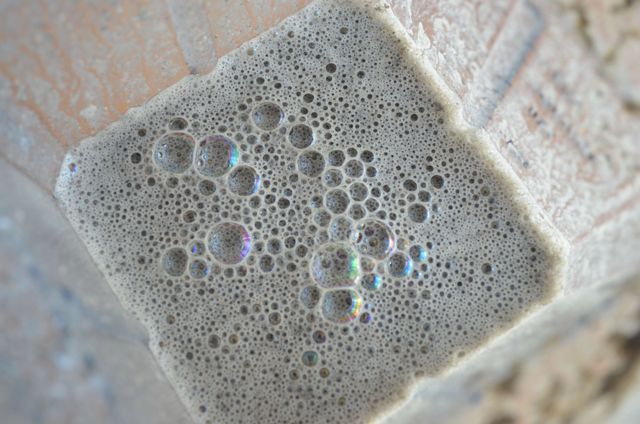
black sesame ground - Mix the blended rice and black sesame seeds in a pot. (NOTE: because I blended my rice and sesame mixture really finely, I just cooked everything together directly in the pot. If your blended mixture is coarse, you may want to separate the solid rice and sesame bits and theire liquid by straining. Mix and cook the two liquids first (just for 2 min) and then add the solid rice and sesame bits later).
- Turn on the heat to medium high and keep stirring until it starts to boil. Stir in remaining 2~3 C of water as it cooks. Cook at low heat for 10-15 min. Make sure you continue to stir (I used a whisk) to prevent any rice from sticking to the bottom of the pot.
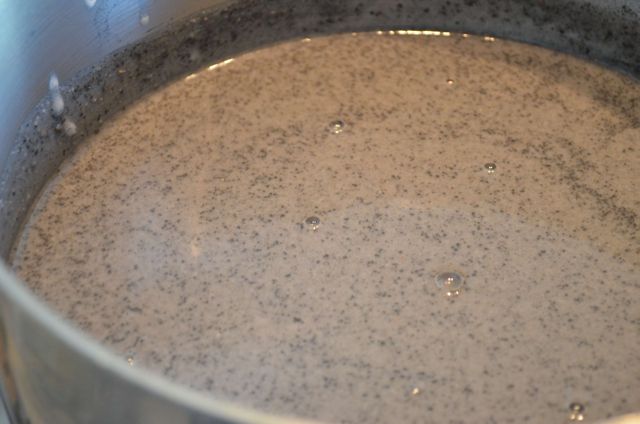
black sesame jook starting to boil - When juk is fully cooked (with 2 C of water added in step 6), it should be quite thick (consistency of thick batter) as shown here:
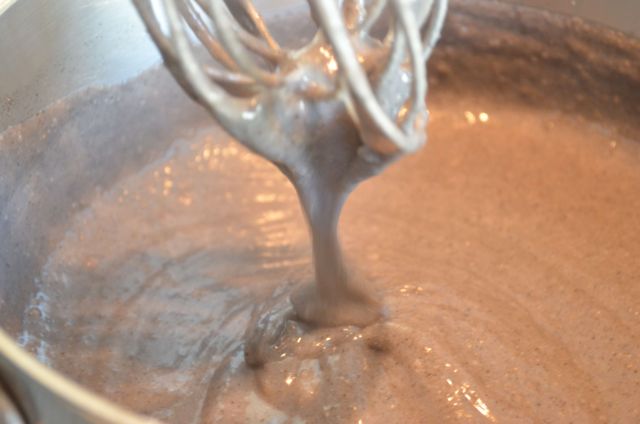
fully cooked black sesame jook If you like yours to be a little more thin, add more water (up to 1 C) and it will come out looking more smooth like the first photo on top.
- Season with salt (1 tsp) to taste. Do NOT add salt early on while it’s cooking but only AFTER it’s fully cooked. Salt can dissolve the rice and make the jook watery. Believe me, I’m not talking about the jook just turning thin, adding too much salt or adding it too early will basically ruin the porridge. A good way is to not season before serving but allow each person to season it themselves right before they eat.
- Optionally you can add sugar or honey to the jook or serve it on the side with the jook (which I recommend).
Right consistency of porridge – 5 or 6 cups of water?
The consistency is very much a personal preference. Adding only 5 C of water will produce a black sesame porridge that’s thicker, closer to a pudding. The picture below shows the black sesame porridge when only 5 cups of water is added. You can see the consistency when you add 6 cups of water in the very top photo.
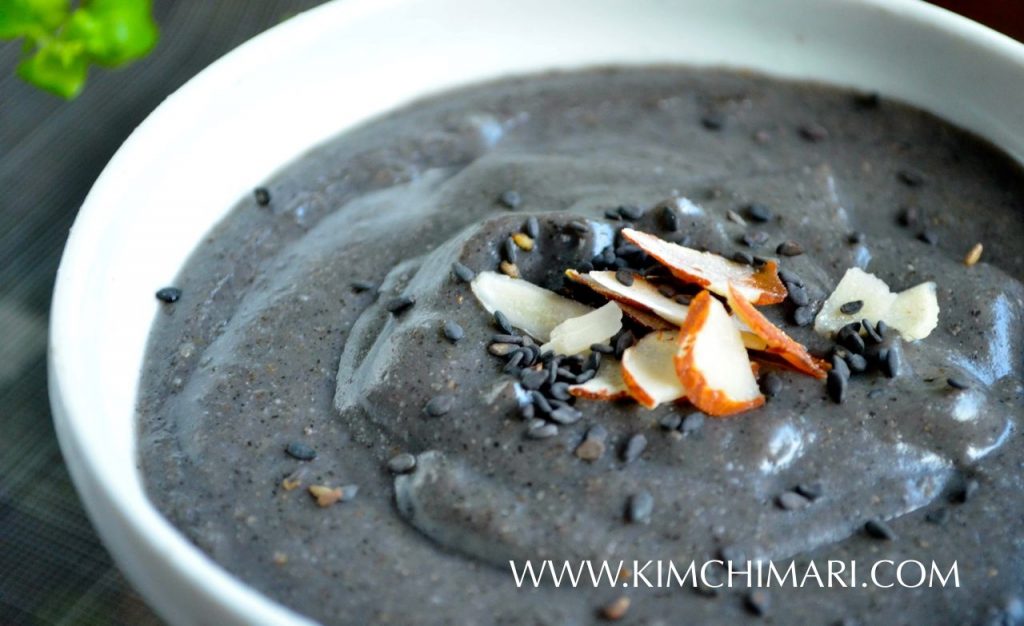
Black Sesame Porridge (Heukimja Juk)
Ingredients
- 1/2 cup Roasted black sesame seeds (you can also use regular sesame seeds, although black sesame seeds are more nutritious)
- 1 cup Short Grain Rice
- 5-6 cup water (water will be divided and used at different stages)
- 1 tsp salt
- Sugar or Honey (optional)
- Dried jujubes/pine nuts/almonds (as garnish)
Instructions
- Measure 1 C of rice and let it soak in water for 1 hour or more and drain.
- Measure 1/2 C of black sesame seeds. Rinse and drain.
- When rice is fully soaked, finely grind rice with 1 C (out of 5) of water.
- Finely blend the black sesame seeds with 2 C of water. Instead of adding all of the water at once, start blending with less water (more like 1/2 to 1 C) and gradually add more.
- Mix the blended rice and black sesame seeds in a pot. (NOTE: because I blended my rice and sesame mixture really finely, I just cooked everything together directly in the pot. If your blended mixture is coarse, you may want to separate the solid rice and sesame bits and theire liquid by straining. Mix and cook the two liquids first (just for 2 min) and then add the solid rice and sesame bits later).
- Turn on the heat to medium high and keep stirring until it starts to boil. Stir in remaining 2~3 C of water as it cooks. Cook at low heat for 10-15 min. Make sure you continue to stir (I used a whisk) to prevent any rice from sticking to the bottom of the pot.
- When the jook is fully cooked (with 2 C of water added in step 6), it should be quite thick (consistency of thick batter) as shown here:
- If you like yours to be a little more thin, add more water (up to 1 C) and it will come out looking more smooth
- Season with salt (1 tsp) to taste. Do NOT add salt early on while it’s cooking but only AFTER it’s fully cooked. Salt can dissolve the rice and make the jook watery. Believe me, I’m not talking about the jook just turning thin, adding too much salt or adding it too early will basically ruin the porridge. A good way is to not season before serving but allow each person to season it themselves right before they eat.
- Optionally you can add sugar or honey to the jook or serve it on the side with the jook (which I recommend).
Tips & Notes:
Nutrition Information:
Variations
- Add other nuts such as pine nuts or walnuts to add more nutty flavor.
- You can use regular sesame seeds instead.
- Use sweet rice powder instead of plain rice. 1 C of sweet rice powder and 5 C of water will work.
Stay warm!
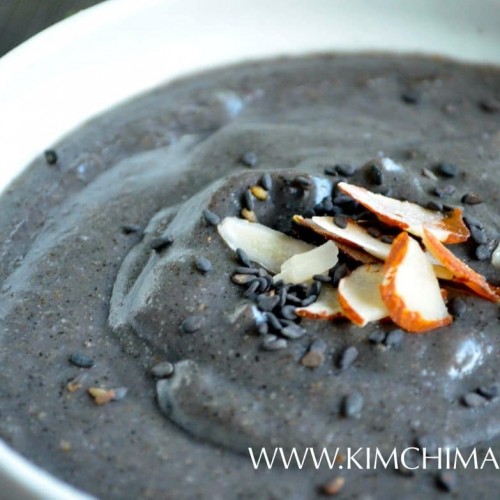
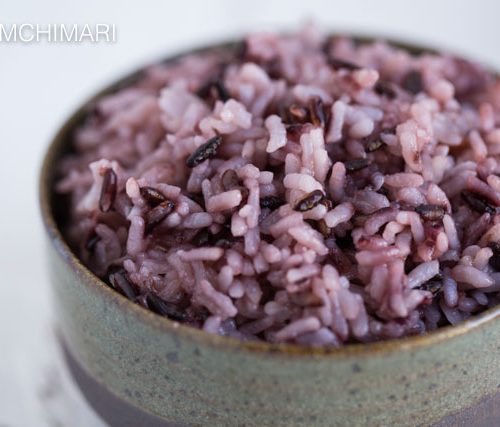


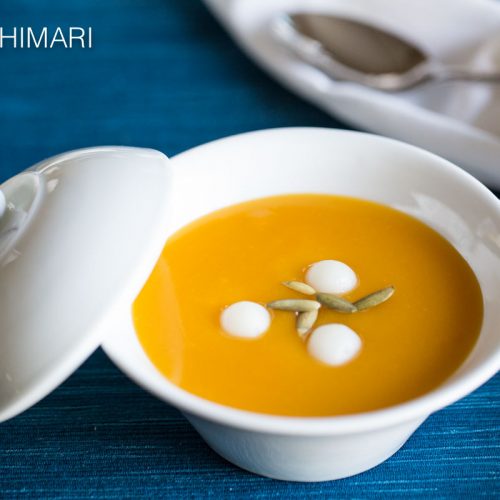
















I never comment on recipes, but I loved this! It had been so long since I had eaten this that I wanted to try the recipe immediately. I used sweet rice flour and pure black sesame powder since that’s what I had on hand and it required less prep. Although VERY untraditional, I served it with hemp seeds (for added protein) and a chopped golden kiwi to create a more well-rounded breakfast.
Yay!! Soo happy to hear that you enjoyed it. And your addition of hemp seeds (maybe chia seeds even?) and kiwi sounds like a great twist – will have to try it next time. Thank you so much!
Looks really delicious! How much time can you keep it in the fridge?
You probably can store it for 2-3 days def. maybe even a couple more days more. YOu can also freeze it if you want to store it even longer. Cheers!
So easy and so delicious!
Awesome! So happy to hear it. Nothing like a hot bowl of juk to warm you up in the winter. Cheers!
Thank you, feeling nourished!
Happy to hear it!
can you make this in the instant pot? I made you kabocha squash jook and it was really good and easy in the instant pot
I am sure you can! But I have not tried it myself so I don’t have exact instructions but try looking up porridge IP recipe and use similar times but actually little less since rice is already ground. And add all the water together of course. Good luck! And so happy to hear you liked my hobak juk!